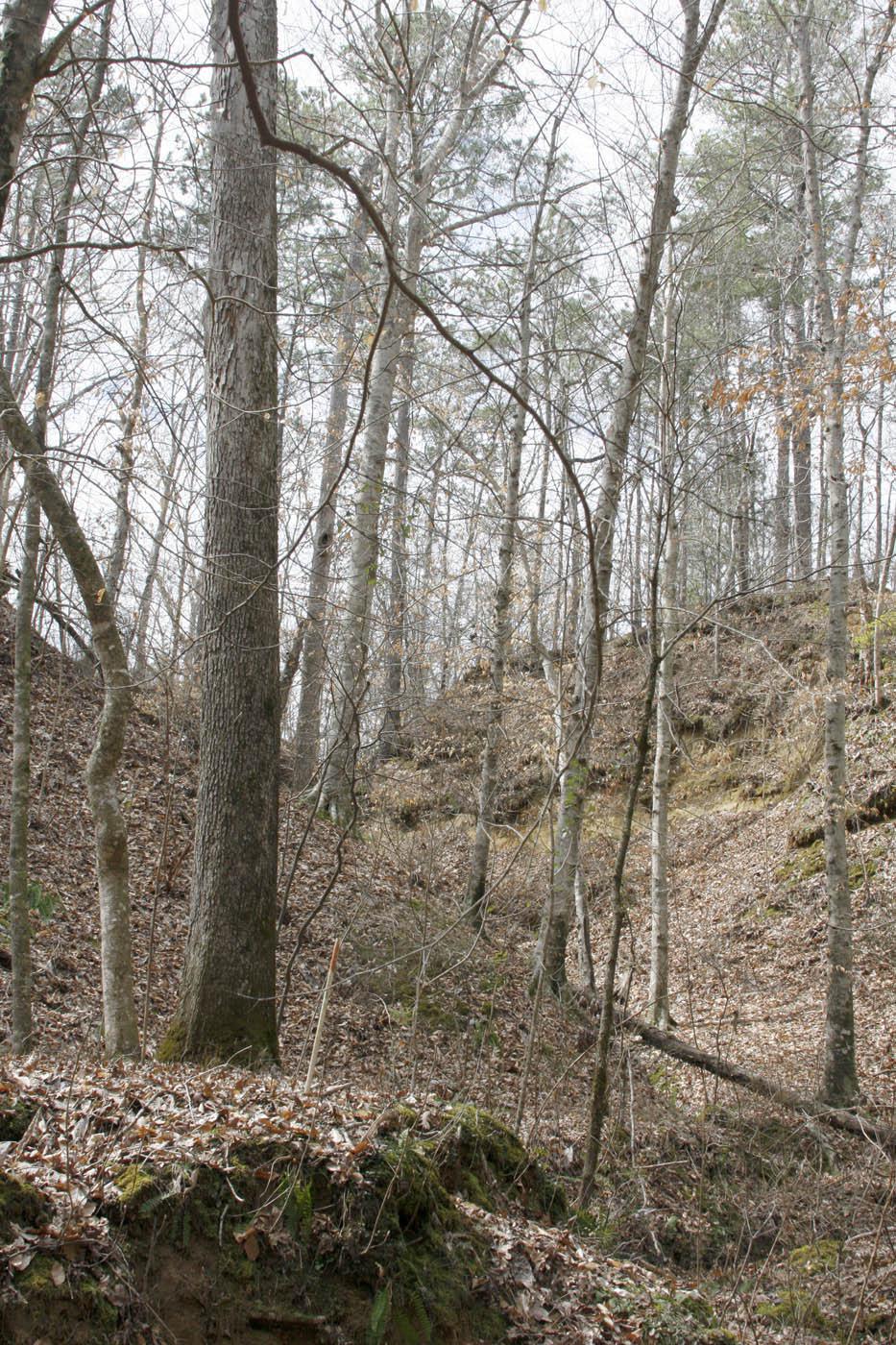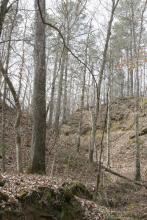Information Possibly Outdated
The information presented on this page was originally released on October 15, 2009. It may not be outdated, but please search our site for more current information. If you plan to quote or reference this information in a publication, please check with the Extension specialist or author before proceeding.
Project to preserve rare Mississippi ecosystem
MISSISSIPPI STATE – A 350-acre area of deep ravines and bluff ridges in Webster County is being preserved to protect its plant and animal diversity that resembles that of the Appalachian Mountains.
The Appalachian Mountains stretch from Alabama to Canada with foothills in northeastern Mississippi. Some 100 miles from these foothills is an area in central Mississippi known as Old Cove. The land is owned by Weyerhaeuser Co. and is home to mature hardwoods, rock outcroppings, reptiles, amphibians and many plant species.
While Old Cove is not a tourist destination like the Appalachians, it is a unique and diverse ecosystem in need of preservation. Weyerhaeuser foresters designated it a “special place” as part of the company’s compliance with the Sustainable Forestry Initiative.
This designation is used for areas with unique qualities within the forest landscape that are usually protected. To preserve the rare ecosystem, Weyerhaeuser sought the expertise found in Mississippi State University’s Forest and Wildlife Research Center and the Mississippi Nature Conservancy.
“The cove habitats support many species not found in other types of forested habitats. By determining the different species that inhabit the coves, we can learn more about conserving these unique communities,” said Jeanne Jones, wildlife and fisheries professor. “The cove habitats, in combination with managed pine forests and streamside management zones, support many animal and plant species.”
To help preserve the cove area, scientists and graduate students are conducting surveys to determine the plant and animal species that inhabit the hardwood forests, seepages and streams of the forested cove habitats. Aaron Posner, a wildlife and fisheries graduate student under Jones’ direction, has collected data from 14 individual timber stands to compile a list of reptiles, amphibians, birds and plants found in the area.
“We have sampled each stand every two months from April 2008 to June 2009,” Posner said. “The stands range from 5-year-old pines to more than 90-year-old hardwoods.”
Posner said they have found a variety of amphibians and plants in the area.
“While we have not found any endangered or threatened amphibians, we have found rarities, including a Southern Red Salamander, a species of concern in Mississippi,” he said. “We have also found some rare and unique plants, such as Solomon’s seal, Green Dragon and several rare orchids.”
In addition to determining the number of species in the coves and pine forests of the Old Cove area, researchers are conducting animal and plant surveys in the streamside management zones. So far, the research has demonstrated that hardwoods in Mississippi provide important habitats for numerous species, especially for rare plants and salamanders.
“By measuring animal and plant communities in Old Cove, we can learn what species are supported by these different habitat types,” Jones said. “Both game and nongame wildlife are found in these habitats, and some of the best habitat for woodland salamanders is also excellent habitat for game species such as wild turkeys and gray squirrels.”
The information being collected will help forest managers understand the role of streamside management zones and cove forests in providing for native species that inhabit the lands they manage in the Old Cove area. Weyerhaeuser professionals are seeking to retain native animal and plant diversity and protect water quality on the lands they manage.
Streamside management zones serve as a voluntary best management practice that prevents soil erosion, protects water quality, and retains habitat in and along streams and rivers during intensive land use, such as logging or land clearing.
“Our goal is to increase understanding of how streamside management zone forests and protected cove forests contribute to the overall species diversity of lands managed for timber production,” Jones said. “This understanding will potentially help us integrate multiple goals on timber lands -- from timber production to turkey hunting to successful salamander searches by children rambling in Mississippi’s summertime woodlands.”
The cove forests are beautiful and important for the survival of selected wildlife and plant species, Jones said.
“Even though Mississippi does not have the grand cove habitats of the Appalachian Mountains, we are fortunate that Weyerhaeuser and the Mississippi Nature Conservancy have worked together to conserve the unique cove areas that remain in our state,” Jones said.






